Pakistan
Tensions between India and Pakistan have reached their most dangerous levels since 2019, following a series of missile strikes, retaliatory threats, and mounting civilian casualties on both sides of the border.
In the early hours of Wednesday morning, Indian missiles struck several locations across Pakistan and Pakistan-administered Kashmir. One of the most significant attacks hit the town of Muridke in Punjab province — long associated with militant networks. These strikes, targeting at least 24 sites, were launched in response to what New Delhi claims was a deadly attack on Indian tourists in Kashmir last month, allegedly carried out by Pakistan-based militants.
Indian officials say the targets were linked to internationally proscribed groups such as Lashkar-e-Taiba and Jaish-e-Mohammed — organisations long accused of orchestrating attacks against Indian civilians and security forces.
“The Indian government says [the strikes] are affiliated with a series of what it considers terrorist groups…responsible for a number of very high-profile attacks — most notably the 2008 attacks in Mumbai,” said Dr. Walter Ladwig, Associate Fellow at King’s College London.
In Pakistan, the response was swift. Prime Minister Shehbaz Sharif condemned the strikes and praised his country’s military response. Speaking before a cheering parliament, he declared: “With the grace of God…our brave forces have given a resounding response to your dirty attack and turned the darkest night into the brightest night.”
Pakistan’s military reported that at least 26 civilians — including women and children — were killed in the Indian airstrikes. Among the dead were students at a seminary in Bahawalpur and worshippers at a mosque near a former Lashkar-e-Taiba complex in Muridke.
Dr. Ladwig warned that Pakistan’s response would likely follow its long-standing strategic doctrine. “The Pakistani military has a proclaimed policy of what they call quid pro quo plus,” he explained. “Whatever India does, we will do at least that in return, but also possibly a little bit more.”
This doctrine played out visibly in 2019, when India conducted airstrikes following a suicide bombing that killed Indian paramilitary forces. Pakistan swiftly retaliated with its own airstrikes. The hope among analysts is that, as with that crisis, both sides will seek to demonstrate resolve without crossing into full-scale war.
“That would be the optimistic case here,” said Ladwig. “That the Pakistani military will respond in some way that allows them to defend or restore their honour, but that it goes no further… If not, we could quickly escalate beyond control.”
Adding to the gravity is the evolving military landscape in South Asia. While India maintains a significantly larger defence budget, Pakistan’s military modernisation has been advancing rapidly — thanks in large part to Chinese support.
“Pakistan is reported to have gained access to Chinese variants of Russian air defence systems,” said Ladwig, pointing to jointly developed fighter jets and more robust air defences. “Although Pakistan has a significantly smaller defence budget, one of its huge assets is the fact that its main weapon supplier is China — and China delivers.”
India, for its part, continues to face challenges in modernising its armed forces. Despite multiple attempts, it has struggled to finalise large-scale arms procurements, relying heavily on legacy Russian tanks and a limited fleet of French Rafale jets.
In cities across India, civil defence drills have intensified, with air raid sirens echoing through urban centres. Schools are participating in emergency simulations, and citizens are bracing for further escalation. New Delhi has named its military operation “Sindoor,” after the red powder worn by married Hindu women — a symbolic nod to those widowed in last month’s Kashmir massacre.
Meanwhile, anti-India protests have erupted across Pakistan, with chants of defiance and vows of vengeance. Pakistan’s National Security Committee has warned that it “reserves the right to respond at a time, place, and manner of its choosing.”
Diplomatic ties have fractured further. Islamabad has closed border crossings, expelled Indian diplomats, and accused New Delhi of using terrorism allegations to justify attacks on civilians.
As the region sits on edge, the spectre of nuclear conflict looms in the background. Both countries possess nuclear weapons and a history of conflict stretching back to their partition in 1947. What happens next depends heavily on Pakistan’s next move — and whether the cycle of violence can be contained before it spirals out of control.





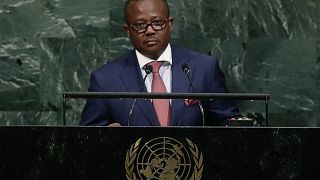

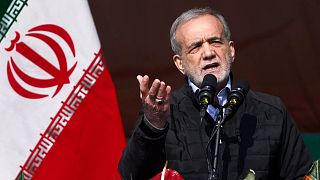
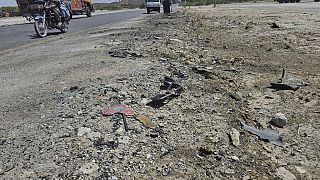

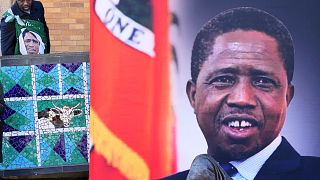
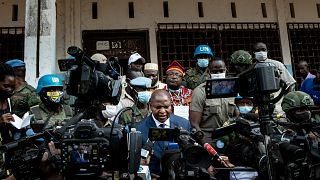
Go to video
Engine fuel cut off before Air India crash that killed 260, preliminary report finds
01:45
From Uganda to NYC: Zohran Mamdani's rise in American politics
01:47
''Can't believe myself'': Air India's sole crash survivor narrates his escape
01:53
India plane crash: Amit Shah confirms 1 survivor, offers condolences
Go to video
Heavy shelling over Kashmir Line of Control leaves at least 5 civilians dead
Go to video
Iran: Death toll in port blast rises as crews scramble to stop blaze